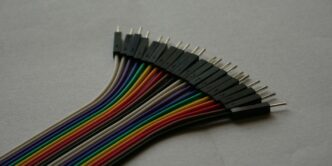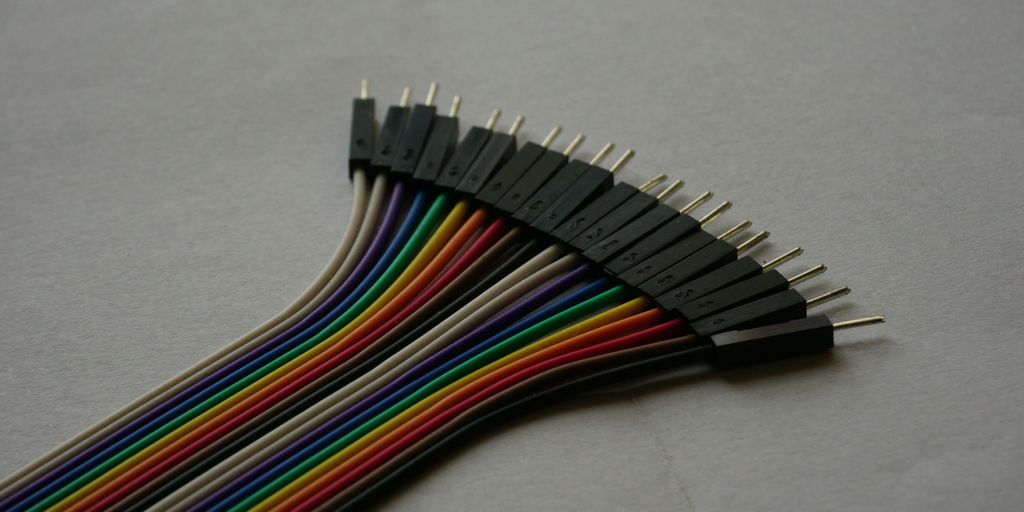So, you’ve probably heard about different ways computer chips get put together, right? Well, one of the cooler, more advanced methods out there is called flip chip wire bond technology. It’s a big deal in making our gadgets smaller, faster, and just generally better. This article will go over why this technology is so good and how it helps make all sorts of electronics work the way they do.
Key Takeaways
- Flip chip wire bond is a modern way to connect chips, turning them upside down for better performance.
- This technology makes devices faster because the electrical paths are shorter.
- It helps chips stay cooler by getting rid of heat more directly.
- Flip chip wire bond allows for smaller gadgets with more connections in a tiny space.
- It’s a reliable method that helps chips last longer, even in tough conditions.
Understanding Flip Chip Wire Bond Technology

Defining Flip Chip Technology
Okay, so what is flip chip wire bond technology? Basically, instead of connecting a microchip to its package using wires that go from the side of the chip to the package (like in traditional wire bonding), flip chip turns the chip upside down – hence the ‘flip’ – and connects it directly to the package substrate. This direct connection is achieved through solder bumps or other interconnects placed on the chip’s surface. Think of it like sticking something directly onto a surface instead of using a wire to hold it in place. This approach offers a bunch of advantages, which we’ll get into later.
Historical Evolution of Flip Chip
Flip chip tech didn’t just pop up overnight. It’s been around for a while, evolving over the years. Early versions were pretty basic, but as electronics got smaller and faster, flip chip kept pace. Here’s a quick rundown:
- Early Days: The concept emerged in the 1960s, but it wasn’t widely adopted due to manufacturing challenges.
- Technological Advancements: Improvements in materials, bumping techniques, and underfill processes made flip chip more viable.
- Modern Applications: Today, it’s a go-to solution for high-performance devices like CPUs and GPUs. The flip chip technology market is constantly evolving.
Key Differences from Traditional Wire Bonding
So, what really sets flip chip apart from traditional wire bonding? It’s more than just flipping a chip over. Here’s a breakdown:
- Connection Method: Wire bonding uses wires to connect the chip to the package, while flip chip uses direct interconnects (like solder bumps). There are different types of wire bonding to consider.
- Performance: Flip chip generally offers better electrical and thermal performance due to shorter interconnects and direct contact.
- Size and Density: Flip chip allows for higher I/O density and smaller package sizes compared to wire bonding. This is important for IC packaging solutions.
- Cost and Complexity: Wire bonding is often cheaper and simpler for low-volume applications, while flip chip can be more cost-effective for high-volume production despite its complexity.
Enhanced Electrical Performance with Flip Chip Wire Bond
Flip chip wire bond technology really shines when it comes to electrical performance. It’s a big deal for devices needing to operate at high speeds and with minimal signal loss. I remember when my old phone would lag just doing basic stuff – that’s the kind of problem this tech helps solve.
Achieving Lower Parasitic Effects
One of the main advantages of flip chip wire bond is its ability to reduce parasitic inductance and capacitance. Traditional wire bonding can introduce unwanted electrical effects due to the length of the wires. Flip chip minimizes this by creating much shorter connections. Think of it like this: a shorter wire is like a shorter path for the electricity, meaning less resistance and less interference. This is especially important in sensitive circuits where even small amounts of interference can mess things up.
Optimizing Signal Integrity
Signal integrity is all about making sure the signal you send is the signal you receive, without distortion or loss. Flip chip wire bond helps with this in a few ways:
- Shorter interconnects mean less signal degradation over distance.
- Controlled impedance helps prevent signal reflections.
- Reduced noise and crosstalk improve signal clarity.
Basically, it’s like having a clear, direct line of communication for your electronic signals. This is why you see it used in things like high-performance processors where every bit of data needs to arrive intact and on time.
Suitability for High-Frequency Applications
High-frequency applications, like 5G and advanced wireless communication, demand the best possible electrical performance. The lower parasitic effects and optimized signal integrity of flip chip wire bond make it a natural fit. It allows devices to operate at higher speeds without sacrificing signal quality. It’s like upgrading from dial-up to fiber optic – the difference is night and day. The table below shows a comparison of signal loss between traditional wire bonding and flip chip at different frequencies:
| Frequency (GHz) | Traditional Wire Bond (dB) | Flip Chip Wire Bond (dB) |
|---|---|---|
| 1 | -1.5 | -0.5 |
| 5 | -4.2 | -1.2 |
| 10 | -7.8 | -2.1 |
As you can see, the signal loss is significantly lower with flip chip wire bond, making it ideal for these demanding applications.
Superior Thermal Management in Flip Chip Wire Bond
Flip chip wire bond technology really shines when it comes to keeping things cool. Traditional methods can struggle with heat, but flip chip offers some serious advantages. It’s not just about avoiding overheating; it’s about maintaining performance and reliability.
Direct Contact for Improved Heat Dissipation
The direct connection between the chip and the substrate is a game-changer for heat removal. Think of it like this: instead of the heat having to travel through layers of material, it has a straight path to get out. This is way more efficient. With wire bonding, you’re relying on the wires to conduct heat away, which isn’t ideal. Flip chip skips that middleman. This direct contact significantly lowers the thermal resistance, allowing for faster and more effective heat transfer. It’s like having a superhighway for heat to escape, preventing hotspots and keeping the chip running smoothly. This is especially important for high-power devices where heat is a major concern. For example, a CPU using flip chip can maintain a lower temperature under heavy load compared to one using traditional wire bonding.
Mitigating Thermal Expansion Mismatch
One of the big challenges in electronics is dealing with different materials expanding and contracting at different rates when they heat up. This is called thermal expansion mismatch, and it can cause serious stress on the connections between the chip and the board. Flip chip addresses this issue head-on. Underfill materials are used to fill the gap between the chip and the substrate. These materials are designed to have a thermal expansion coefficient that’s somewhere in between the chip and the substrate. This helps to distribute the stress more evenly, reducing the risk of cracking or failure. It’s like having a shock absorber that cushions the impact of the different expansion rates. Without this, the solder joints could weaken over time, leading to reliability problems. The underfill acts as a buffer, ensuring a more stable and durable connection. This is a critical factor in ensuring the long-term reliability of the device. You can find more information about IC packaging online.
Advanced Underfill Materials for Stability
Speaking of underfill, it’s not just any old glue. These materials are specifically engineered to provide mechanical support and thermal conductivity. They’re designed to withstand high temperatures and harsh conditions, ensuring that the connection remains strong and stable over time. Some underfill materials even have additives that improve their thermal conductivity, further enhancing heat dissipation. The choice of underfill material depends on the specific application and the materials used in the chip and substrate. Factors like operating temperature, humidity, and vibration levels all play a role in the selection process. Using the right underfill is crucial for maximizing the benefits of flip chip technology and ensuring long-term reliability. Here are some key properties of underfill materials:
- Coefficient of Thermal Expansion (CTE): Ideally matched to the surrounding materials.
- Thermal Conductivity: High thermal conductivity for efficient heat dissipation.
- Adhesion Strength: Strong adhesion to both the chip and the substrate.
- Moisture Resistance: Protection against moisture-induced failures.
Compactness and High Density in Flip Chip Wire Bond
Flip chip wire bond technology really shines when you need to pack a lot of functionality into a small space. It’s all about making things smaller and more efficient. I remember when phones first started getting really thin – flip chip was definitely playing a role behind the scenes.
Enabling Smaller Form Factors
With flip chip, you can get away with much smaller packages compared to traditional wire bonding. This is because the chip is directly attached to the substrate, eliminating the need for long wire bonds that take up space. Think about smartwatches or other wearable tech; they wouldn’t be possible without advancements in compact packaging like flip chip. It’s not just about shrinking the device; it’s about fitting more features into the same tiny footprint. The advantages of flip chip are clear when space is a premium.
Achieving Higher I/O Density
I/O density refers to the number of input/output connections you can cram into a given area. Flip chip is a champ here. Because the connections are spread across the entire surface of the chip, rather than just around the edges like in wire bonding, you can get a lot more connections in a smaller area. This is super important for complex chips that need to communicate with a lot of other components. Imagine trying to build a high-end graphics card with old-school wire bonding – it just wouldn’t be feasible.
Potential for 3D Integration
This is where things get really interesting. Flip chip opens the door to stacking chips on top of each other, creating true 3D integrated circuits. This can dramatically increase the density and performance of electronic devices. Think about stacking memory chips to create a huge amount of memory in a tiny space. It’s like building a skyscraper instead of a sprawling ranch house – you get way more usable space in the same area. While it adds complexity, the potential benefits are huge, especially for applications like high-performance computing and advanced mobile devices.
Cost-Effectiveness and Manufacturability of Flip Chip Wire Bond
Flip chip wire bond technology presents a mixed bag when it comes to cost and ease of manufacturing. It’s not always a clear win over traditional methods, and several factors can swing the pendulum one way or the other. Let’s break it down.
Cost Considerations Across Production Volumes
Okay, so here’s the deal: upfront, flip chip can seem pricier. There are more steps involved, and the materials can add up. However, the overall cost picture changes dramatically as production volume increases.
Think of it like this:
- Low Volume: Wire bonding often wins due to lower initial setup costs and simpler processes.
- Medium Volume: It’s a toss-up. The specific design and performance requirements will dictate which is more economical.
- High Volume: Flip chip starts to shine. The ability to pack more chips onto a wafer and the potential for automation bring the per-unit cost down.
To illustrate, consider a simplified cost breakdown:
| Factor | Wire Bonding (Low Volume) | Flip Chip (High Volume) |
|---|---|---|
| Setup Costs | Lower | Higher |
| Material Costs | Lower | Moderate |
| Labor Costs | Higher | Lower |
| Wafer Usage | Less Efficient | More Efficient |
| Overall Cost/Unit | Moderate | Lower |
Process Complexity and Alignment Precision
No sugarcoating here: flip chip assembly is more complex than wire bonding. It demands precise alignment between the chip and the substrate. We’re talking micron-level accuracy. This translates to:
- Specialized equipment: You’ll need machines capable of that level of precision.
- Skilled operators: People who know how to run and maintain that equipment.
- Tighter process control: More monitoring and adjustments to keep everything within spec.
Wire bonding, on the other hand, is more forgiving. It’s a more mature technology, and the equipment is more widely available. Plus, it’s easier to make design changes on the fly. If you need a quick turnaround, wire bonding might be the better bet.
Advantages in High-Volume Production
Despite the initial hurdles, flip chip really comes into its own when you’re churning out large quantities. The benefits include:
- Automation: Flip chip lends itself well to automated assembly lines, reducing labor costs and increasing throughput.
- Scalability: Once the process is dialed in, it’s easier to ramp up production to meet demand.
- Improved yields: With proper process control, flip chip can achieve high yields, minimizing waste and further reducing costs.
So, while flip chip might seem daunting at first, it’s a worthwhile investment for high-volume applications where performance and cost are both critical. Just be prepared for a steeper learning curve and higher initial investment.
Reliability and Robustness of Flip Chip Wire Bond
Proven Reliability in Diverse Environments
Flip chip wire bond technology has proven itself to be pretty reliable across a bunch of different conditions. You see it holding up well in everything from consumer electronics to industrial applications. This is largely due to the advancements in materials and processes that have been developed over the years. It’s not just about slapping a chip onto a board; it’s about making sure it stays there and works, no matter what you throw at it. Think about your phone – it gets hot, cold, bumped around – and the chip inside keeps ticking. That’s reliability in action. The industrial protective clothing fabrics market is another area where reliability is key.
Mechanical Stabilization with Underfill
One of the key things that makes flip chip wire bond so robust is the use of underfill. This stuff is basically an epoxy that goes in between the chip and the substrate. It does a couple of important things:
- It helps to distribute stress, so the solder joints don’t get all the pressure.
- It protects the solder joints from moisture and contaminants.
- It provides mechanical support, so the chip doesn’t move around.
Without underfill, flip chip connections would be way more likely to fail, especially when things get hot or cold. It’s like the glue that holds everything together, making sure it can handle the ups and downs of everyday use.
Reduced Risk of Interconnect Failure
Because of the direct connection and the use of underfill, flip chip wire bond has a lower risk of interconnect failure compared to some other packaging methods. Think about it: you’ve got a solid connection, it’s protected from the elements, and it’s mechanically stable. That’s a recipe for reliability. Of course, things can still go wrong, but overall, flip chip wire bond is a pretty solid choice when you need something that’s going to last. It’s not perfect, but it’s a step up in terms of keeping those connections strong and steady.
Diverse Applications of Flip Chip Wire Bond
Flip chip wire bond technology isn’t just some lab experiment; it’s out there in the real world, powering a bunch of devices we use every day. It’s pretty cool to see how this tech has made its way into so many different areas.
High-Performance Computing and Mobile Devices
Flip chip is a big deal in CPUs and GPUs for computers and smartphones. Think about it: your phone needs to be small but still pack a punch. Flip chip helps achieve that by allowing for more connections in a smaller space. It’s also used in other high-performance components in mobile devices. It’s all about speed and efficiency, and flip chip delivers.
Advanced Automotive Electronics
Cars are becoming rolling computers, and flip chip is helping to make that happen. Advanced Driver Assistance Systems (ADAS) rely on fast processing and reliable connections. Flip chip is finding its way into automotive electronics because it can handle the heat and stress of the automotive environment. Plus, as cars get smarter, they need more processing power, and flip chip is there to provide it. It’s not just about making cars safer; it’s about making them more capable overall. Check out Automotive PCBs for more information.
Networking and RF Devices
High-speed internet? Wireless communication? Flip chip is in there too. Routers and switches need to move data quickly, and the improved electrical performance of flip chip packaging helps them do just that. The shorter interconnects in flip chip tech are ideal for high-frequency applications in wireless communications. It’s all about minimizing signal loss and maximizing speed. Without it, streaming your favorite shows or video conferencing would be a lot less smooth.
Wrapping It Up
So, we’ve gone over a lot about flip chip technology. It’s pretty clear that it brings some big benefits to the table, like making things smaller and faster. But, it’s not always the right answer for every project. Sometimes, good old wire bonding still makes more sense, especially for simpler stuff or when you’re trying to save a buck. The main takeaway here is that picking the right method really comes down to what you need for your specific product. Both of these ways of connecting chips are still getting better, and they’ll probably keep working side-by-side as electronics keep moving forward.
Frequently Asked Questions
What exactly is flip chip technology?
Flip chip technology is a way to connect computer chips to other parts of an electronic device. Instead of using tiny wires, the chip is flipped upside down and connected directly with small bumps, like tiny balls of solder. This makes the connections shorter and stronger.
Why is flip chip technology considered better than older methods?
Flip chip technology is better because it makes electronic devices smaller and more powerful. The connections are shorter, which helps signals travel faster and clearer. It also helps chips stay cooler, which is really important for devices that do a lot of work, like smartphones or computers.
How does flip chip differ from traditional wire bonding?
The main difference is how the chip connects. Traditional wire bonding uses thin wires, like tiny threads, to link the chip to the circuit board. Flip chip, on the other hand, connects the chip directly using small bumps on its surface. This direct connection is usually more efficient.
Is flip chip technology good for high-speed electronics?
Yes, flip chip technology is great for devices that need to be very fast, like the main processors in computers and smartphones. The shorter connections mean less signal loss and interference, which is crucial for high-speed performance.
Is flip chip technology expensive to make?
Making flip chip devices can be a bit more complicated and costly at first because it needs very precise machines to line everything up perfectly. However, for making many devices, it can actually save money in the long run because it uses less material and makes smaller, more powerful chips.
How reliable is flip chip technology?
Flip chip technology is very reliable. Because the connections are shorter and stronger, there’s less chance of them breaking or getting damaged. Also, a special glue called ‘underfill’ is often used to protect the connections and make the whole setup more stable.














